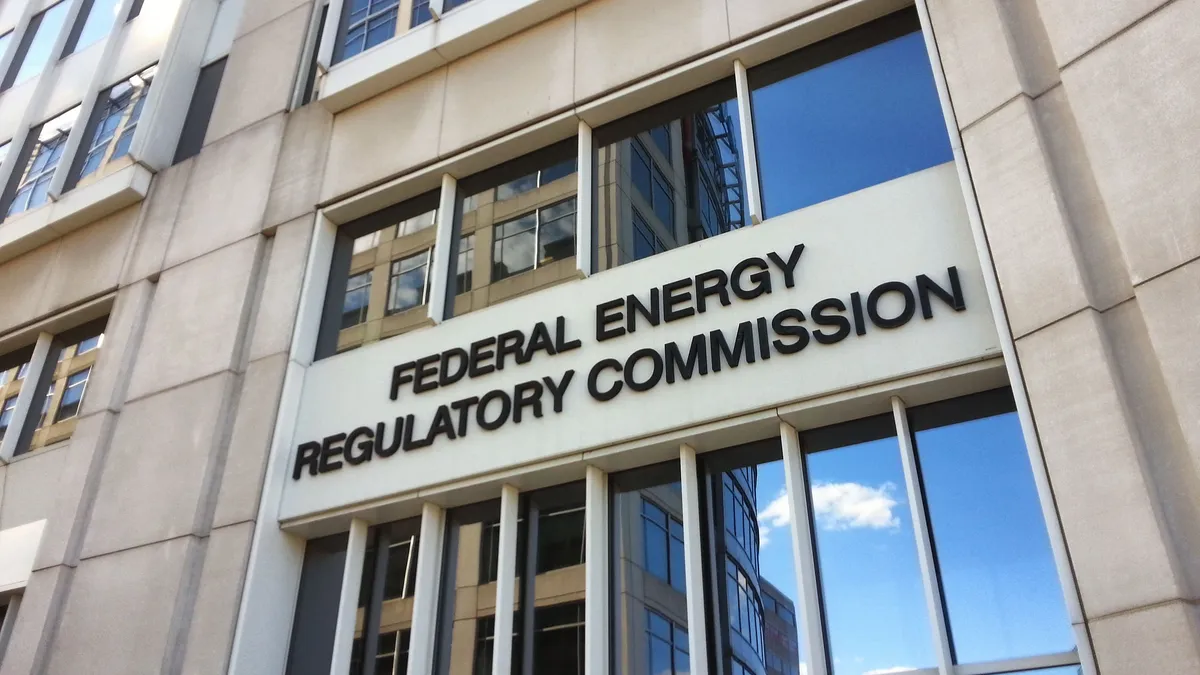Dive Brief:
-
The Federal Energy Regulatory Commission will “reenergize” its review of the Public Utilities Regulatory Policy Act (PURPA), Chairman Kevin McIntyre announced at the agency’s monthly open meeting.
-
FERC also approved a Louisiana gas pipeline and issued new reliability guidelines for transmission planners and owners on geomagnetic disturbances. Commissioner Richard Glick dissented on the pipeline vote over climate change concerns.
-
FERC staff also presented their summer 2018 reliability report, finding most regions of the country are prepared to meet electricity demand, but expressing concern about conditions in California and the Texas markets.
Dive Insight:
PURPA, first enacted in 1978, is a significant driver of renewable energy projects, particularly in states that still retain the vertically-integrated utility model and are not subject to wholesale markets.
The law was the nation’s first foray into competitive electricity generation, directing utilities to buy power from certain “qualifying facilities” (QF) owned by independent suppliers.
In recent years, some utilities have claimed developers are “gaming” PURPA rules on project separation, siting adjacent facilities just over the one-mile distance required to designate a project as a QF. FERC held a technical conference on those issues back in 2016.
McIntyre said that record will help inform FERC’s restarted PURPA examination, but he gave no indication as to the timeline or format of the review, saying he has an “open mind” on the subject.
Commissioner Robert Powelson said that given FERC’s past examination of the issue, regulators should “expedite” the restarted review.
"There are things we know full well, from the one mile rule to QF reform, that we can address quickly,” he said.
Commissioners Chatterjee and Glick, however, stressed that any major changes to PURPA would have to come from Congress.
GMD NOPR
FERC on Thursday also unanimously approved a new Notice of Proposed Rulemaking on geomagnetic disturbances caused by solar activity. Such GMDs are rare, but can cause widespread power outages on unprotected systems when they occur.
FERC’s new NOPR directs transmission planners to revise their definitions for GMD events, requires data collection on GMD impacts and sets deadlines for planners to develop corrective action and mitigation plans. Comments are due 60 days after its publication in the Federal Register.
Pipeline dissent
The only dissenting vote on the FERC agenda Thursday came from Glick, who voted against a construction certificate for the Westlake Expansion Project in Louisiana, a short pipeline and compressor station project meant to serve an Entergy generator.
Glick did not question the need for the pipeline, but, like in past dissents, critiqued the commission’s accounting of climate change impacts from the project. The majority, he said, is “refusing” to assess greenhouse gas impacts, while still endorsing an environmental impact statement that does not find undue harm.
“I’m not sure how we can do that,” he said.
Environmental activists last year challenged FERC’s climate change accounting in court, leading the D.C. Circuit Court of Appeals to direct the agency to revisit its climate change accounting. Though FERC later wrote it could not adequately measure climate impacts, Glick said that position leaves it open for more litigation.
“We are increasing the risk that the courts will vacate our orders and send them back to the commission,” Glick said.
Summer reliability
As FERC digs into its ongoing review of pipeline policies, the coming summer looks auspicious for the gas sector.
A warmer-than-normal summer could mean near-record gas burn across the U.S., FERC staff said in their reliability assessment, but demand-side measures and more distributed energy mean that power demand will likely remain stable from last year.
Reserve margins are above their target levels in all regional electricity markets, staff said, except for the Electric Reliability Council of Texas (ERCOT), which FERC does not regulate.
ERCOT may face generation shortfalls on its grid during hot weather this summer, staff said, but the grid operator expects to have “sufficient operational tools to manage tight reserves.”
Those include “deploying ERCOT-contracted load resources and emergency response services, using a previously mothballed unit,” and calling on generators that can switch from other markets to ERCOT.
Power supply could also face challenges in Southern California, where disruptions to local gas pipelines and storage could combine with diminished hydro generation caused by an early snow melt. If that happens, CAISO “expects demand response and consumer conservation to mitigate tight supply conditions.”
Powelson took aim at California over the reliability report, saying they have not done enough to bolster local gas supply and bring back online the Aliso Canyon gas storage facility near Los Angeles, which is still only partially operational after a 2015 leak.
“I am deeply troubled by California policymakers’ refusal to support the Aliso Canyon facility as a reliable storage facility to deal with backup storage not just for [local gas distribution companies] but for merchant generators as well,” he said. “We are getting away from economic dispatch and causing tremendous costs to consumers.”
The reliability report also noted that the U.S. is slated to add 25 GW of generation in the summer months of 2018, far more than the 14 GW that has retired since May 2017.
Some sector observers worry those conditions are contributing to a capacity oversupply in the Eastern Interconnect. Glick referenced those concerns in connection to FERC’s pending resilience docket, where owners of at-risk generation have pushed market changes for higher capacity prices.
"Maintaining amounts of excess capacity does not to me suggest a more resilient or reliable grid," Glick said.













